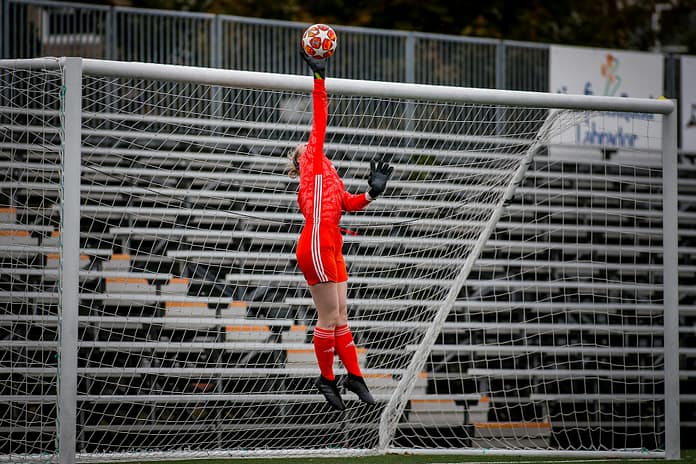Many coaches tell me, “In goalkeeper training, we can simulate match situations, but we’ll never reach the same speed or quality as a real game.”
That’s not entirely wrong — but using it as an excuse is dangerous. I believe it’s essential to accept this challenge, not avoid it. We need to get as close as possible to the reality of the game. That means creating training environments that expose our goalkeepers to the same types of decisions, rhythms and pressures they’ll face on matchday.
For decades, goalkeeper training was heavily focused on isolated technical work. And don’t get me wrong — this part is still hugely important to me. Controlled drills, consistent repetitions, ideal service, “goalkeeper gymnastics” to develop a clean and precise technique. Especially in the German goalkeeper education system, where my roots lie, this foundation is essential.
The game has changed
Football has progressed — and no position has undergone a greater transformation than goalkeeping. Today’s goalkeepers are expected to manage the game, contribute as playmakers, and organize their team far beyond the box. Still, at the core, the primary responsibilities remain unchanged: to protect the goal and control space in the key moments that decide matches.
In real games, goalkeepers operate in some sort of chaos. They deal with constantly changing angles, distances, defenders, attackers, pressure and space. The rhythm of the situation matters. The decision-making window is shrinking.
Game-realistic goalkeeper training means more than just turning up the tempo or intensity. It means:
- Creating real angles, distances and time pressures
- Designing exercises with moving balls, unopposed and opposed finishes
- Simulating scenarios from the game: crosses, cutbacks, switches, second phases, transitions
- Varying the rhythm and triggers
We have to recognize that goalkeepers don’t just react — they read. They prevent and solve problems. They process visual and tactical information before the shot is taken. So, our training must reflect that.
Ask yourself:
- Does this exercise replicate what the goalkeeper sees in a match?
- Are they reading the game situation, not just reacting to service?
- Does the pressure they’re under in this moment feel like a game?
At the core of all this is decision-making
Decision-making doesn’t grow in sterile environments. It needs stimulus. It needs unpredictability. It needs mistakes. If your goalkeeper isn’t occasionally getting it wrong in training, they’re not being challenged enough. Like any skill, decision-making improves through repetition — but these game-specific reps rarely happen in team training, where the goalkeeper often plays a more secondary role. That’s why it’s so essential we create intentional, high-repetition decision-making scenarios in goalkeeper-specific sessions. Of course, you still need technical work. Of course, you still need structure. But that can’t be the whole picture. Your goalkeeper needs to leave training feeling like they played a match — mentally, physically emotionally.
I’m not saying every session needs to be full-intensity chaos. But isolation can no longer be the default. Game-realism must a consistent and intentional part of the goalkeeper’s training rhythm — not the exception, but the standard.
Because if we train in ways that don’t reflect the game, we shouldn’t be surprised when the game exposes our goalkeepers.

